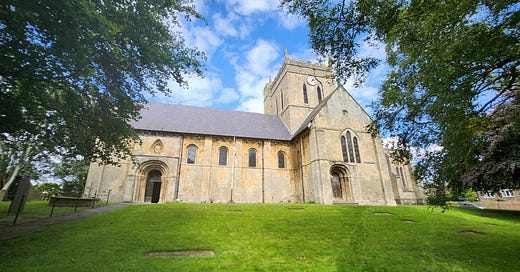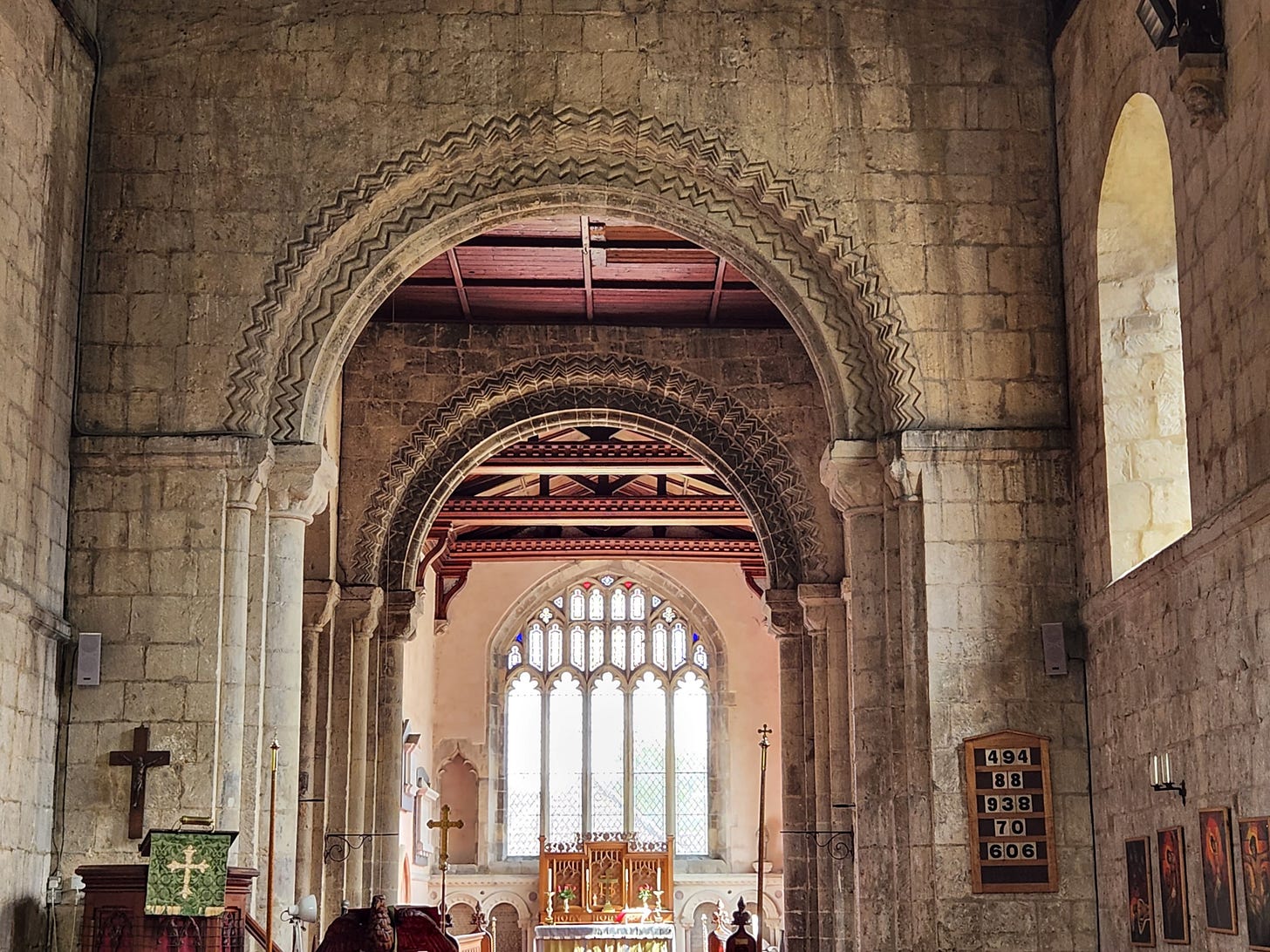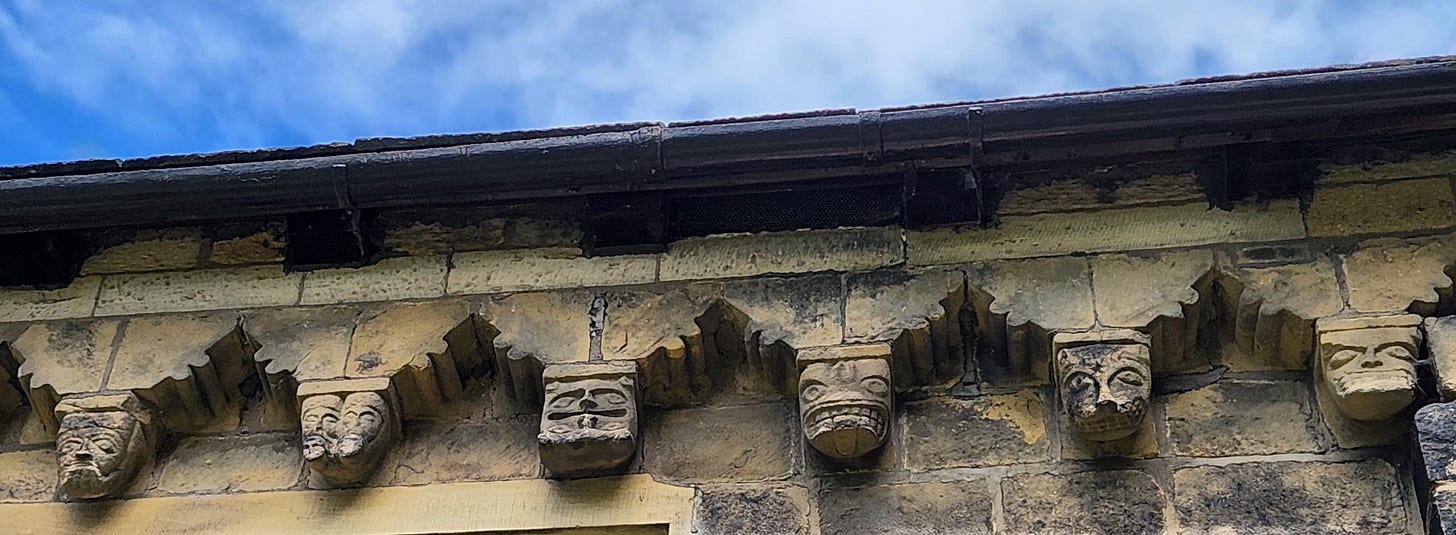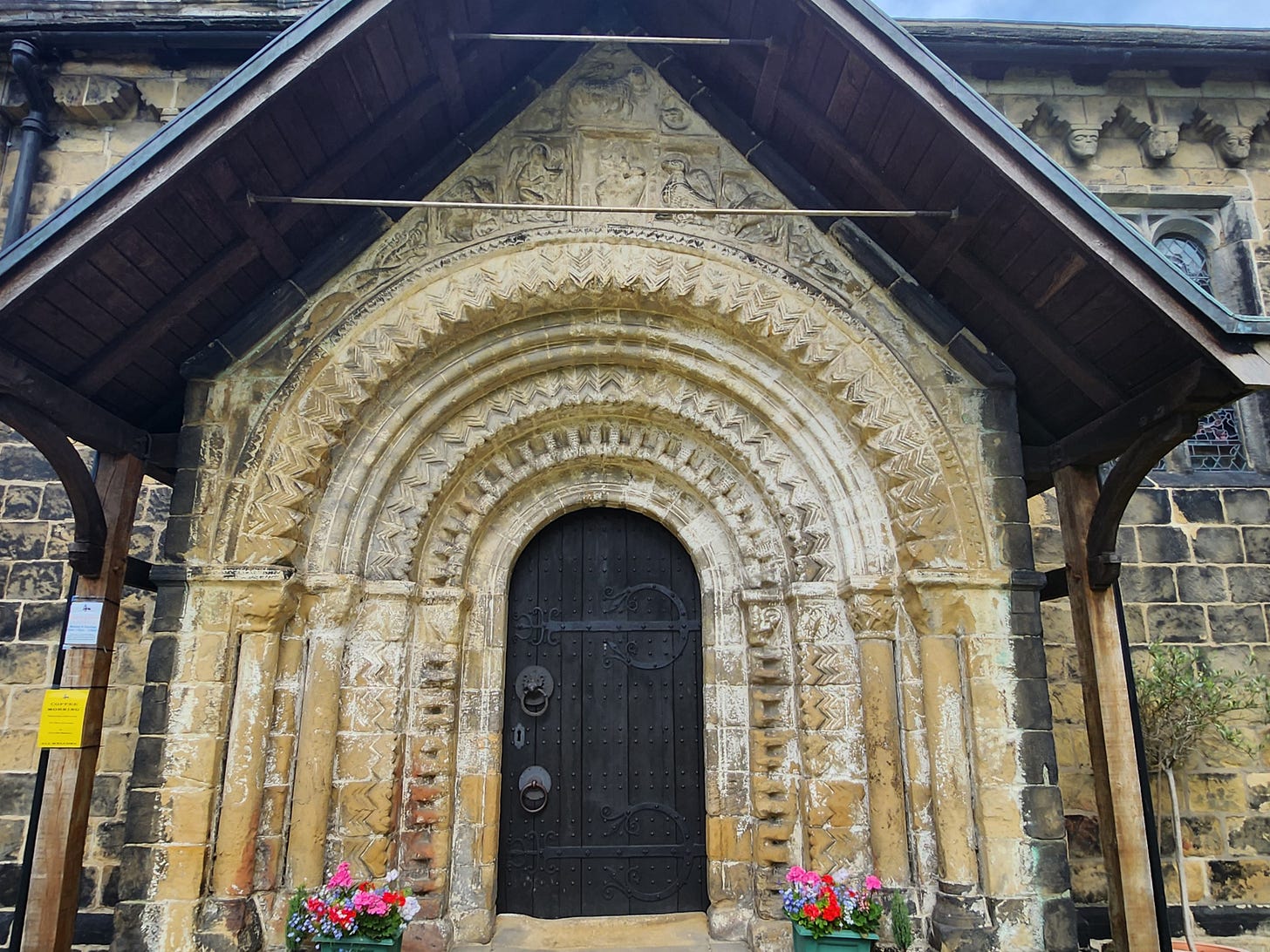Most Norman churches were remodellings/rebuildings of earlier Anglo Saxon churches. In their turn, Norman churches often got remodelled themselves and so we don’t have many Norman exteriors. There are a few exceptions. Here’s one, the church at North Newbald in East Yorkshire, which, apart from the insertion of larger windows, is mostly as first built around 1140.
This church has no less than four Norman doors, the grandest of which is this south door, the main door to the church. Multiple arches frame the door – the outer being of a twisted design, the next being quite plain, the next one a classic chevron pattern and the inner one plain again. The carving on the pillars is also very high standard, on each of the doors. Above this door is a picture of Christ in Majesty, a common depiction at the time, which we see too rarely today.
The inside is glorious. Obviously the later windows add a ton of light, but the original windows would have lit it fairly well too. It’s built in the shape of a cross, with a central tower. On this pic you can just see an old roof line above the first arch, so it seems like the main body of the church was built first, with a low temporary roof until they built the tower up later and then fixed the roof higher.
Here’s a closer look at the arches, which are really magnificent. In the distance is the chancel, which was remodelled at a later date and has an empty niche in the corner for the statue of St Nicholas, to whom the church was dedicated.
The churches we looked at last time were small and humble, but I think this church shows you how awe-inspiring Norman architecture can be at a bigger scale.
The church in Adel, Leeds (Yorkshire) is a bit smaller but also has an exterior which is mostly original, with some restoration. You can see the high and small Norman windows quite clearly here, but also what is called a “corbel table” which was common on Norman churches – a line under the edge of the roof, decorated with strange carvings. Erosion has tended to wash these away, and while some of these are restorations, they are based on original models.
These faces – animals or humans - often have odd expressions, are putting their tongues out, gurning or grinning madly. What was their purpose? No-one really knows. It’s thought they could be to put off demons from entering the church. They persisted through the Norman period and into the medieval churches.
Adel was built between 1150 and 1170 and is famous for this door, which is an extraordinary carved entrance. It still has some of its covering of heavy-duty limewash, which covered most crosses, doors and often the entire exterior of the church. Paint was then applied on that foundation.
The figures are rather weathered, but once again we have Christ in Majesty at the top, surrounded by other images which are a bit mysterious. There’s a lamb, a bird, a sun and a moon, among others. The wooden door itself is ancient, and had a 13th century knocker, a replica of which is attached as the original was stolen in 2002.
Keep reading with a 7-day free trial
Subscribe to Incola ego sum in terra to keep reading this post and get 7 days of free access to the full post archives.










